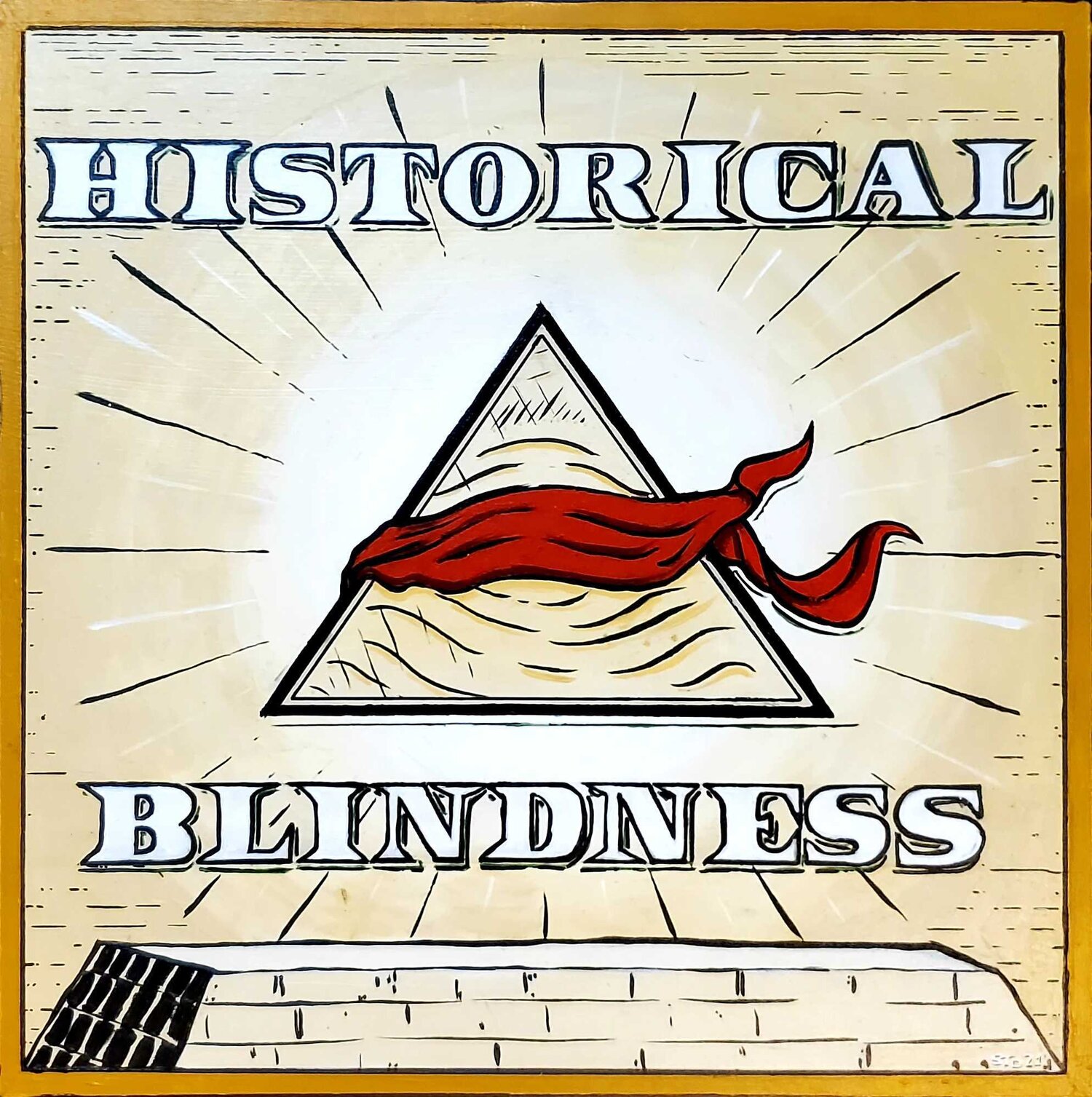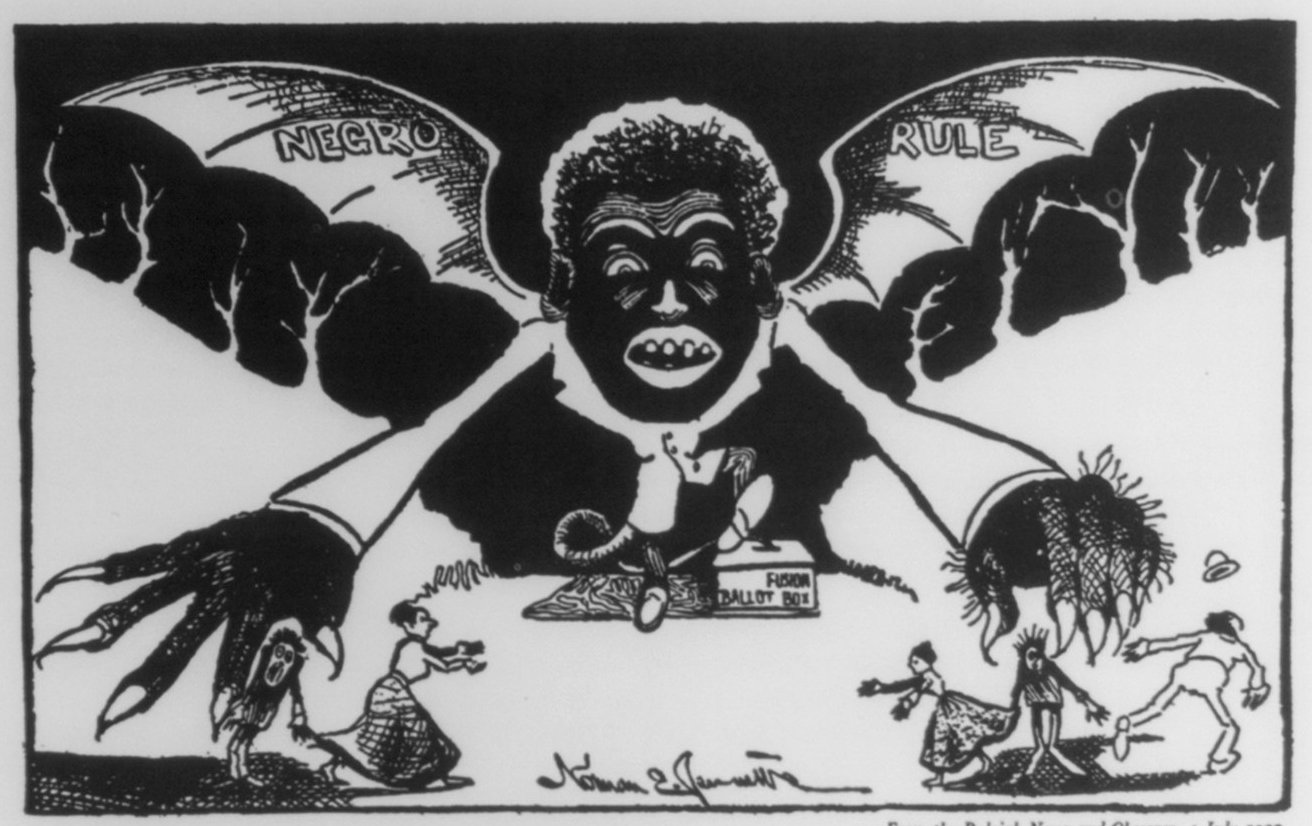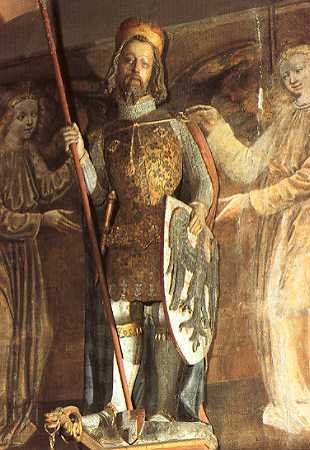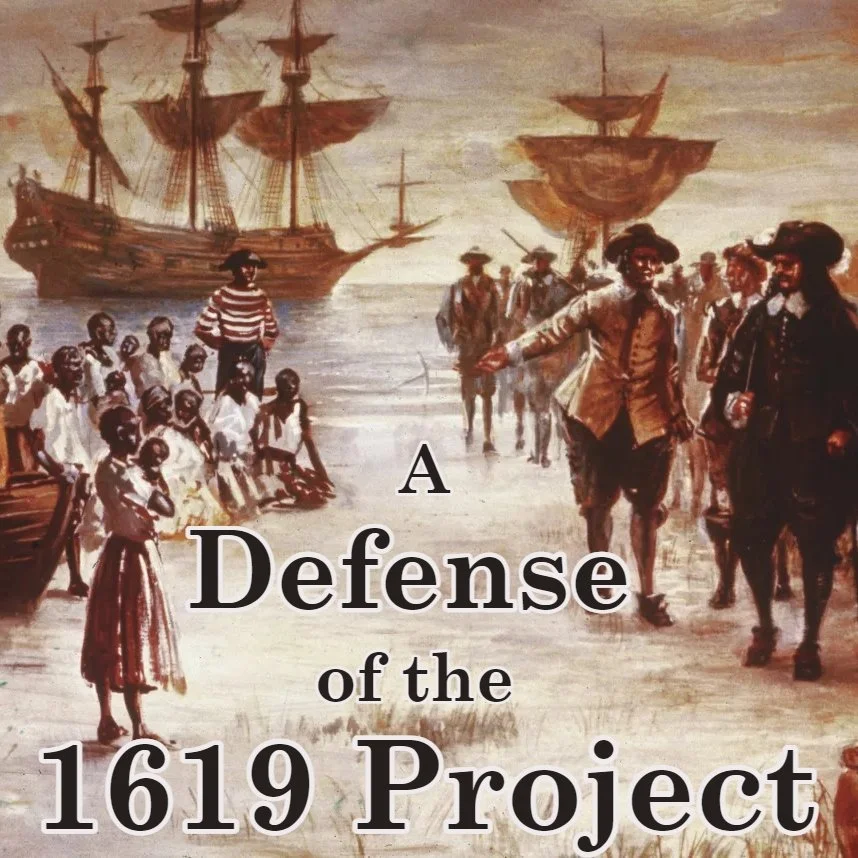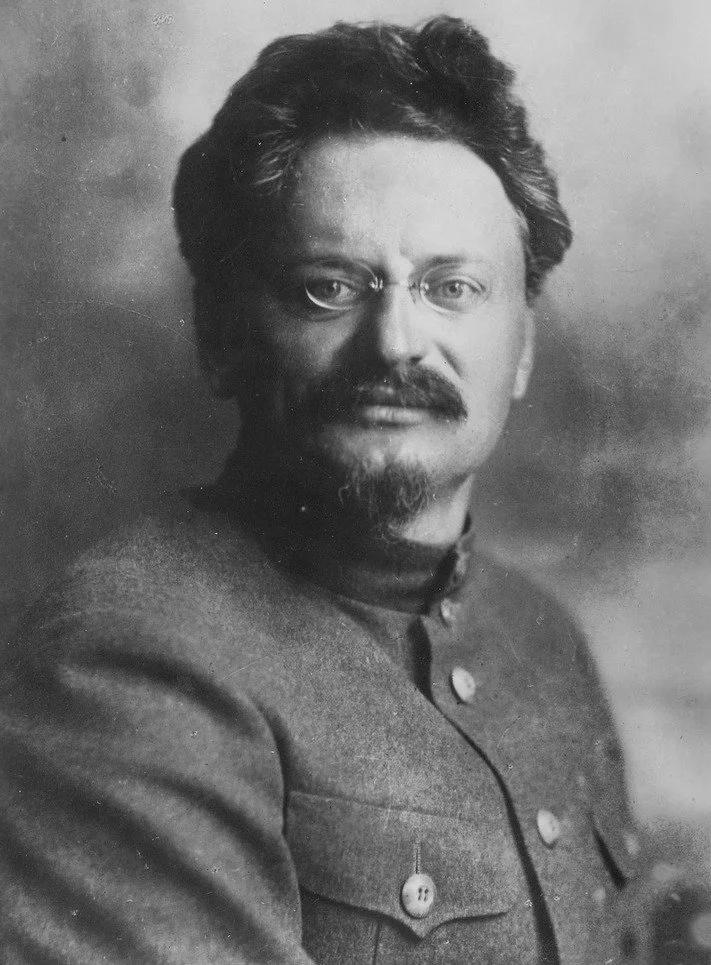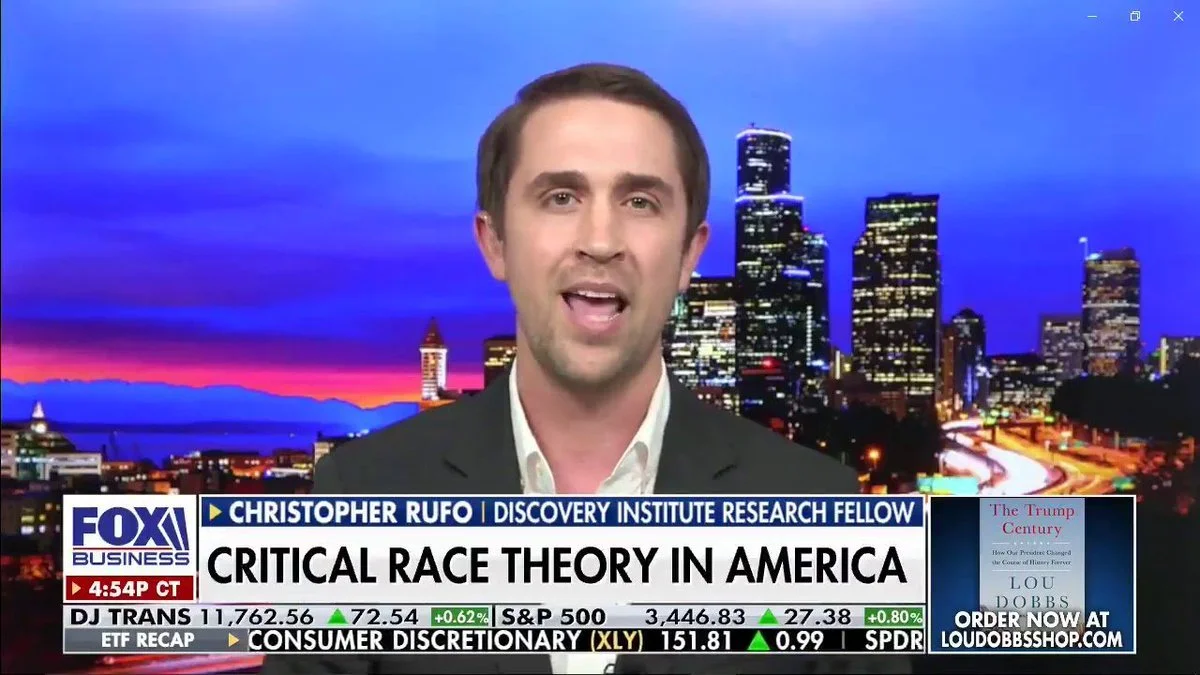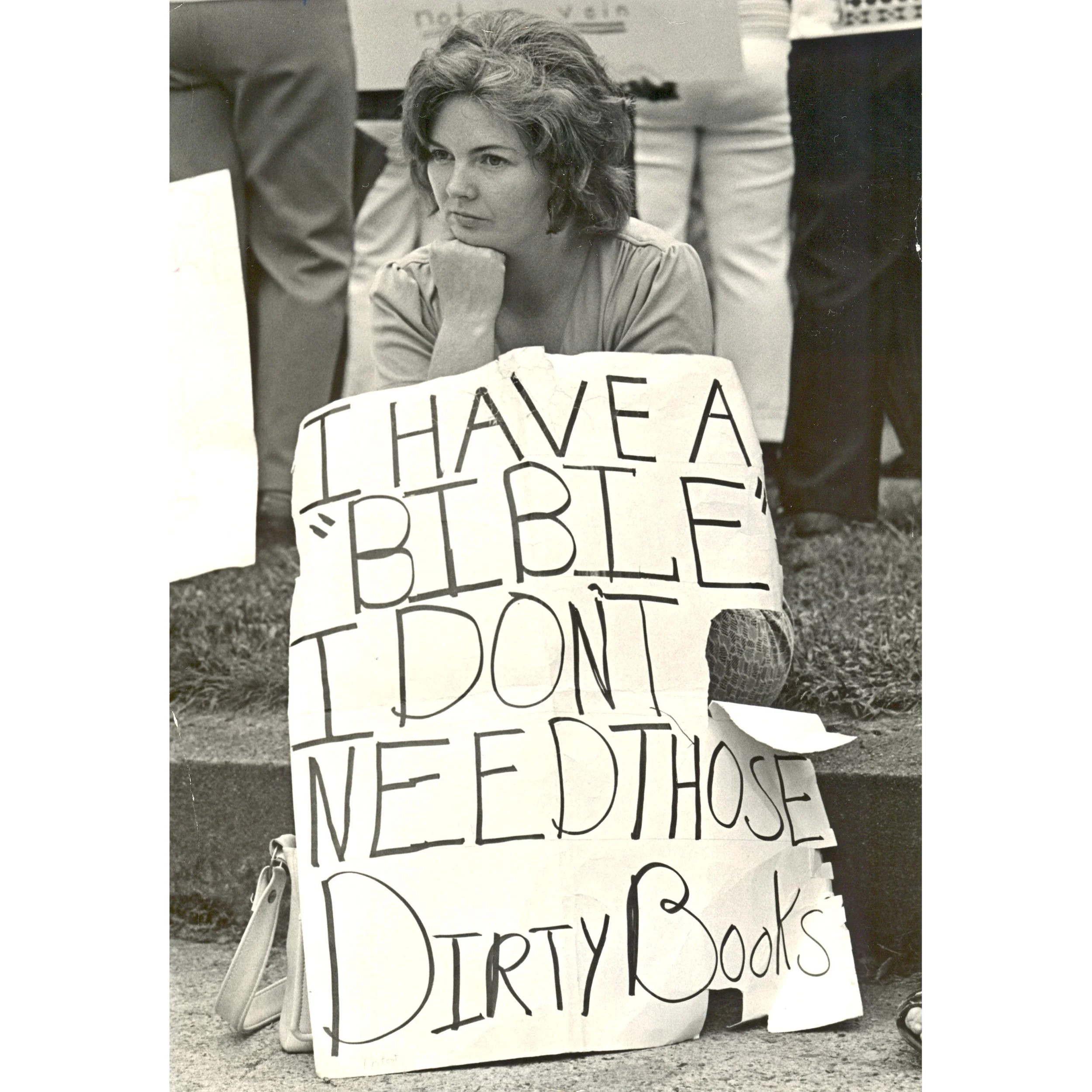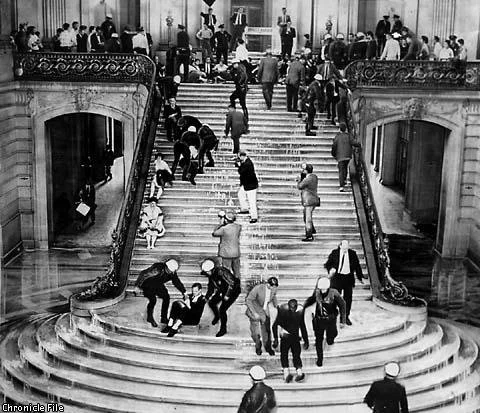The Coup on Cape Fear - Part Two: Red Shirt Riot
It is no secret that prominent conspiracy theorist and erstwhile U.S. President Donald Trump’s baseless claims of voter fraud, proven to be without merit in court case after court case, were the main impetus propelling the Capitol Rioters in their attempted coup on January 6th, 2020. And such claims were nothing new from Trump. He was telegraphing his intentions to make these claims throughout the 2020 campaign, using this lie as a means of suppressing votes by casting suspicion on the perfectly legal and secure mail-in voting protocols that many states relied on during the first year of the pandemic. Indeed, Trump had told this lie many times before. He blamed Mitt Romney’s loss to Barack Obama in 2012 on voter fraud, he blamed his own defeat by Ted Cruz in the 2016 Iowa caucus on cheating, and when he was projected to lose the presidential election that year, he suggested he could only lose if the election were stolen. Even after winning, he doubled down on his voter fraud claims, seemingly in a desperate effort to save face over having lost the popular vote, and he organized the Presidential Advisory Committee on Election Integrity, appointing to it people like J. Christian Adams, who had been making false claims about voter fraud for years through his conservative legal group, the Public Interest Legal Foundation, or PILF. The voter fraud commission was not long lived, but PILF has continued to make claims about non-citizens voting and dead people voting, all of which have been investigated by journalists and election supervisors and disproven, but conservative media amplifies these claims and not their eventual disproof or PILF’s quiet retractions of claims. It is propaganda, pure and simple. Certainly, voter fraud exists, but it is not the epidemic they claim. In fact, it is frequently conservatives themselves who are guilty of committing it in the occasional genuine cases that are proven. Take for example, some of the only real cases of voter fraud to have been turned up after all the scrutiny over the 2020 election, a cluster of incidents all in the same Florida retirement community, The Villages, where four different residents have been arrested for voting more than once for Trump. It shouldn’t have come as much of a surprise; after all, in his rhetoric before election day, Donald Trump had said that, in order to counteract the cheating he said would be happening, his supporters should vote more than once. Essentially, he said there’s voter fraud, so the solution is more voter fraud! Absurd as it may seem, this is actually more common than you might think. Let us return to North Carolina, the scene of our story, for a further example. 120 years after the post-election insurrection in Wilmington, a definite case of voter fraud occurred. Conservative proponents of the widespread voter fraud conspiracy theory like to point to this case because it involved absentee ballots, but it was the Republican candidate for congress, Mark Harris, or more specifically, his political operative McCrae Dowless, who was guilty of the fraud. In Bladen County, northwest of Wilmington, a Black get-out-the-vote group had previously seen great success with an absentee ballot initiative. Many conservatives suspected that group, The Bladen Improvement Association, of voter fraud, but they never produced any evidence of wrongdoing because the Improvement Association’s use of absentee ballots appears to have been completely above board. Unable to confirm their conspiracy theories about voter fraud favoring the Left, the Right just went ahead and committed voter fraud themselves, with McCrae Dowless found guilty of organizing an elaborate ballot fraud operation, in which they would collect blank ballots, fill them out in support of Republicans, forge witness signatures using different colored pens and different names to prevent detection, and deliver them in small batches to avoid suspicion. NPR’s Serial Productions made a fantastic podcast about the whole affair, called The Improvement Association, which I encourage everyone to check out. The takeaway here is that we see a pattern among reactionaries: point your finger in voter fraud accusation with one hand while the other is stuffing fraudulent ballots into the box. We can see the pattern all the way back in the 19th century, when the progressive and reactionary parties had opposite names. On Cape Fear in 1868, after Abraham Galloway mustered newly freed Black residents and stood up to the voter intimidation of the KKK, their subsequent legitimate victory at the polls, making universal male suffrage a reality in North Carolina, was blamed on voter fraud by white supremacists. Yet thirty years later, white supremacists would gleefully resort to voter intimidation and fraud and even armed insurrection to achieve their own political ends.
Numerous times on this podcast, I have spoken about the supposed and the real influence of secret societies on changes in government. When it is the claim of a vast conspiracy, such as the idea that the Illuminati was behind the French Revolution, or that the Jesuits intrigued to assassinate kings and reverse the Reformation or the Revolution, it is a disprovable and untenable fallacy. However, there have been clear instances of secret societies influencing political change through electioneering. In Bourbon Restoration France, the secret society of the Chevaliers de la Foi, or Knights of the Faith, were instrumental in achieving Ultramontane Catholic domination of the government. I spoke about this in part two of my series on the Rise and Fall of the Society of Jesus. And in the mid-nineteenth century, the Order of the Star Spangled Banner in America, about whom I have released a Patreon exclusive podcast episode, swore their members to secrecy as they worked to stir resentment of Catholic immigrants and eventually launch the nativist Know-Nothing Party into political power, their party’s name a direct reference to the secrecy of the society that started their movement. After the Civil War, Southern Confederate veterans formed the Ku Klux Klan, another effort to influence the social and political order through secret combination, and more specifically through violence. Thus it should come as no surprise that, as the newspaper editor Josephus Daniels and the Democratic chairman Furnifold Simmons developed their White Supremacy campaign in 1898, it relied on the clandestine scheming of more than one secret society in Cape Fear country. Some of these secret societies, operating as compartmentalized cells of the White Supremacy campaign in Wilmington, were called Group Six and the Secret Nine. They did much of the on-the-ground planning for the coup to take place after the election, establishing safehouses and organizing the “citizen patrols” and “vigilance committees” that would act as death squads when the violence erupted. Some among them may have truly believed the false news about an impending Black uprising that Josephus Daniels was purposely spreading, but many of them were in it for the sake of hate and just out for blood, as evidenced by the fact that the men commanded by these secret societies, most already sporting the red shirts symbolic of white supremacist anti-Reconstruction violence in the South, had to be held back and talked down from commencing with their planned reign of terror before election day. They were champing at the bit to strike at Alexander Manly, the offending Black newspaperman who had dared to suggest that whites raped Black women just as much or more than Black men raped white women and, even more offensive to their sensibilities, that it was possible for white women to welcome the amorous advances of Black men and even made such advances themselves. The Red Shirts wanted to lynch Manly, as they had wanted to do since the day his controversial editorial was printed, and they wanted to burn his newspaper, the Daily Record, to the ground. The leaders of the White Supremacy campaign had to reassure their Red Shirts that they would be set loose on Manly and the Record after the election, and that it benefitted them and their cause to keep the peace for the time being.
Alexander Manly. Photo Courtesy of the J.Y. Joyner Library, Special Collections, East Carolina University
With their newspapers creating the false impression that the Black citizens of Wilmington were planning some kind of uprising, they justified their mustering of a standing army of Red Shirt white supremacists who were ready at any moment to strike first and thereby create the race riot they said they feared. Indeed, Red Shirts were already assaulting Black residents in the streets with impunity. It was a self-fulfilling prophecy, and the White Supremacists had full control of the situation, which they made clear to the Fusionist Governor of North Carolina, Daniel Russell. In their first bid to undermine the forthcoming election and seize power, the White Supremacists threatened Russell. First, they said that he couldn’t make a campaign stop in Wilmington because a speech from him would set off a race war. When Governor Russell canceled his visit, they pressed further, knowing that Russell feared being blamed for the outbreak of a race war. So they strong-armed Governor Russell into removing all the Fusionist and Republican candidates for county offices. Election Day was still weeks away, and already White Supremacists in Wilmington had threatened and bullied their way to victory in all county offices up for election. Then Election Day came, and lo and behold, there was no uprising of Black residents. Instead, Black and white men alike went to the polls early, hoping to cast their votes and avoid trouble. Red Shirt “vigilance committees” stopped and searched black men wherever they saw them, certain they would find them armed or carrying kerosene intent on setting the city ablaze, but of course they found nothing of the sort. Their harassment certainly dissuaded many Black citizens from even attempting to vote though, and in some precincts, Red Shirts actually turned Black voters away in flagrant acts of voter intimidation. Many Red Shirts wanted to attempt far more on Election Day, pushing to move in force on the Daily Record offices and Black newspaper editor Alexander Manly, but they were again kept in check by their leaders, who assured them that they would be set loose like attack dogs in the aftermath of the election. Governor Russell was obliged to travel to Wilmington, his hometown, to cast his vote, but he was on alert that Red Shirts might attack him. In fact, as he was escorted to the polls by White Supremacists who wanted to avoid such a scandal, he suffered nothing worse than some insults about his corpulence. Afterward, the governor suffered the indignity of having to switch trains and finally having to hide away in the baggage car to avoid Red Shirts who were hunting him throughout his return journey. Finally, that evening, as votes were being tallied, the White Supremacists carried out the most brazen part of their plan to steal the election. They surrounded polling stations in predominately Black and Fusionist precincts, turned off the streetlights outside, stormed inside shoving people over and upending tables, knocking lamps aside. In the ensuing confusion, as poll workers scrambled and fled in darkness or stamped out fires spreading from the overturned lanterns, the White Supremacists stuffed the ballot boxes before escaping. Some of their opponent candidates had already stepped down at the governor’s request due to the corrupt bargain they’d made, and now their voter intimidation and fraud resulted in White Supremacist Democrats illegitimately winning the rest of the races. By the time all the ballots were counted, the so-called “White Man’s ticket” had swept the election of 1898 in Wilmington.
On November 9th, the day after the election, the absolute domination of the White Supremacists was trumpeted in newspapers that did not give any hint that their victory was illegitimate. The day was quiet, and many believed the White Supremacists might cease their reign of terror, having gotten what they wanted, but their secret societies and other orchestrators of the campaign knew that more was to come. They had pent up the hatred and violence of their Red Shirt army as long as they could and could postpone its full expression no longer. One white supremacist newspaper printed a notice inviting the white men of Wilmington to a meeting at the courthouse, at which White Supremacists approved a statement they called the “Wilmington Declaration of Independence.” Their declaration resolved that they would no longer be “ruled by Negroes,” nor by whites “affiliating with negroes.” They denounced the right of Black men to vote, suggesting that they used the franchise only to antagonize the interests of whites, who “paid 95 percent of taxes.” They claimed that employing Black workers had somehow harmed Wilmington’s economy and resolved that those jobs must be “handed over to white men,” and that the Daily Record was to be shut down, its editor, Alexander Manly, banished from the city. But more than this, these seditionists resolved that the rest of the city’s Fusionist government was to be overthrown. The Mayor and the Chief of Police were to be forced to resign, and the entire board of aldermen likewise would be unceremoniously ejected from office. One man emerged from this meeting, rather against the preferences of the White Supremacy campaign orchestrators and the members of its secret society leadership, as the de facto leader of the mob. Alfred Moore Waddell, a Confederate veteran, skilled orator, and former congressman, had become something of a drunk with gambling debts. Over the last year, he had seen in the White Supremacy campaign an opportunity to restore his political career, and had wormed his way in by volunteering to give speeches, one speech in particular, declaring that they would “choke the Cape Fear with carcasses” in order to overturn the current social and political order, having stuck in the minds of many Red Shirts. Waddell had only heard about the meeting at the courthouse on November 9th last minute, but once he rushed over, he was called on to speak, much to the chagrin of the campaign’s leaders. After that, he was selected to lead a committee of 25 men to plan their overthrow of the government and to further ensure that no Black man would ever again hold a position of authority in Wilmington. Waddell’s Committee of Twenty-Five started by summoning the men they thought of as the leaders of the Black community. With little time to prepare, these Black leaders, all of them lawyers and business owners, answered the summons and came to the committee, hats in hand, terrified.
Alfred Moore Waddell. Library of Congress Prints and Photographs Division. Brady-Handy Photograph Collection. http://hdl.loc.gov/loc.pnp/cwpbh.04294
Alfred Waddell gave these Black leaders an ultimatum, reading the white men’s “Declaration of Independence” aloud and insisting that the Back leadership reply in writing, agreeing to use their influence to meet the demands or face consequences. These summoned Black community leaders left the meeting and immediately wrote their letter of response, capitulating entirely and agreeing to do everything in their power to help ensure white supremacy in the city. But their capitulation would mean nothing. The young man tasked with delivering the letter to Waddell’s house became afraid of the Red Shirts who filled the streets, firing their rifles into the air, and instead chose to drop the letter off at the Post Office. After all, word had already been sent to Waddell that the Black leaders had acquiesced in writing. Waddell, however, was hoping for any reason to escalate the situation and in the process further elevate himself. The next day, November 10th, he emerged from his home after the deadline he had given to the Black leaders to respond, and despite knowing that their response was in the mail, he declared that they had failed to respond to the Committee’s demands. Taking command of some five hundred white gunmen who had gathered in Wilmington, spoiling for a riot, he marched them to the Daily Record office and politely knocked before breaking down the door and destroying the place. Broken piece of the printing press as well as fixtures and pieces of furniture flew out of the office’s windows, and then came smoke as the Red Shirts set the place on fire. A Black fire crew quickly responded as the fire spread to adjacent buildings, but the white rioters kept them at bay until the newspaper offices were entirely burned down. Many were disappointed that the office was empty and that Alexander Manly, the truth-telling Black newspaper editor, was not there for them to lynch. Apparently he had read the writing on the wall and had already fled the city for his life. According to one story passed down in his family, Manly, who often passed for white, was stopped by White Supremacist gunmen outside of Wilmington, who believing him white, confided that they were planning “a necktie party” for the Black newspaper editor Alexander Manly. Supposedly they even gave Manly a rifle and told him to keep an eye out for himself. For the rest of his life, Alexander Manly, who had shown great courage and principle in publishing his inflammatory editorials, would blame himself for what happened next in Wilmington.
At a cotton compress that employed many Black laborers, the workers’ wives showed up, telling them that the White Supremacists were attacking, and the workers left their tasks, begging their employer to let them off work in order to protect their families and homes. Waddell’s Red Shirts, hearing the rumor that a Black mob was forming at the compress, hurried there and begged Waddell to issue an order to shoot all the black workers present. Before that situation got out of hand, though, rumor of an armed Black mob drew the Red Shirts away. A small crowd of Black men had gathered in front of a saloon, dismayed at the burning of the Record and the threats of the Red Shirts. A few of them were armed with what few old weapons they could find, and the Red Shirt mob, believing the long foretold Black uprising had begun, converged on them, amassing across the street and cursing them. Finally, the white rioters unleashed a barrage of gunfire, and some of the Blacks fired back, though they were hopelessly outgunned. White Supremacists would afterward claim that the Blacks fired first, but this seems very unlikely. Twelve Blacks and only two whites were afterward delivered to the hospital with gunshot wounds following this first skirmish, and it is very telling that all of the Black patients had been shot in the back, whereas none of the white patients had been, which certainly would seem to indicate the whites were the aggressors. Regardless, though, the Red Shirts would go on to raise absolute hell that day, marching from place to place around the city, chasing after the ghosts of rumored Black mobs that didn’t exist and shooting down Black men in the streets along the way. Telegraphs were sent to Governor Russell claiming that the Black residents of Wilmington had started the race war they had long warned about, prompting Russell to declare martial law, activate the Wilmington Light Infantry, and send in the state militia. The problem was, many of the Red Shirt rioters were part of the Light Infantry and were commanded by White Supremacy campaign leaders, and the militia detachments sent in were full of white supremacists as well. They now had a mandate from the state to put down an uprising that didn’t exist. In other words, they had the go-ahead to freely massacre the Black people of Wilmington. They hitched the rapid-fire guns that they had obtained in anticipation of this day, and they rode through the streets in machine gun death squads, mowing down any Black citizens who were not already in hiding, and afterward they went to their churches and then to their homes, shooting up the walls of their refuges and demanding they surrender, whereupon they were more likely to be summarily executed than taken prisoner. Before the massacre was over, at least 60 Black residents had been murdered, but many think the number of dead is likely much higher, counting in the several hundreds. A multitude of the Black residents of Wilmington disappeared after the White Supremacist riot, and it is unclear whether they simply fled the city or were buried in the ditches that reports say Red Shirts filled with Black corpses.
White Supremacists posing in front of Alexander Manly’s Daily Record newspaper office after burning it down. Public domain.
That evening, as the Black families of Wilmington left their homes and hid in cemeteries and swamps to avoid the death squads, Alfred Waddell, now the undisputed leader of the White Supremacist campaign of terror, convened his Committee of Twenty-Five and plotted the completion of their coup. They sent letters to the Fusionist Police Chief, the Mayor, and the Board of Aldermen, demanding that they gather at City Hall for an emergency session. Then they simply drew up a list of names for who would replace the current officeholders. Unsurprisingly, Waddell was selected as the new Mayor of Wilmington, and the rest of the offices would likewise be filled by staunch White Supremacists. When the time came, Waddell and his Committee, as well as a huge mob of Red Shirts, stormed City Hall, shouting taunts and curses as they entered the seat of local government and made their way through its corridors to the main chamber in a scene that should seem exceedingly familiar to us in the 2020s. The purpose of the emergency session was made very clear to all the remaining Fusionist government. They were being asked to resign, and the aldermen had no illusions about whether there was any real choice in the matter. Red Shirt gunmen leaned from the rails in the gallery, scowling and scorning them. Each duly elected board member resigned in turn, and their replacement was “nominated and elected,” though election had nothing to do with it. They were being installed by insurrectionists in a blatant coup. Afterward, Waddell would claim the whole process had been perfectly legal, and astoundingly, even Northern magazines and newspapers, like Collier’s and the New York Times, would report it as such. Northern journalists had been present in town both before and during the riot because of all the anticipation of a race war, but they invariably interviewed whites rather than Blacks about the troubles and took their word for what was going on. After the overthrow of Wilmington’s government, the Times shamefully reported that the city’s Board of Aldermen had simply “resigned in response to public sentiment.” Thus the lies of seditionists and insurrectionists were recorded as truth and became the accepted historical narrative for what happened on November 10th, 1898. The lies proliferated through the years in pamphlets and even textbooks. It was not until 1951 that a historian rejected the White Supremacist version of events. Now, for the most faithful accounting of what really happened, you can read my principal source for this episode, the Pulitzer Prize-winning work by David Zucchino, Wilmington’s Lie: The Murderous Coup of 1898 and the Rise of White Supremacy.
In the days after the coup, while the working class Black residents of Wilmington stayed hidden in the forests and swamps outside of town, the Black business owners and white Fusionist leaders remained, confident that the White Supremacists would relent after getting what they wanted. The White Supremacist insurrectionaries, though, were not satisfied. They rounded up Black and Fusionist pillars of the community and directed them to depart from the city and never return. The choice was banishment or certain death, and they were not even given enough time to put their affairs in order. Even among those who complied, some still did not make it out alive, like a Black barber, Carter Peamon, who got onto a train that also carried a group of Red Shirts and was later found dead in the woods with numerous gunshot wounds. Even one white Fusionist, a deputy sheriff the White Supremacists had forced to resign, would likely have been murdered by a gang of Red Shirts during his attempt to leave town if it weren’t for the fact that he gave the Masonic distress call and some whites among his attackers were oathbound to protect him. Eventually, Mayor Alfred Waddell was obliged to get his Red Shirts under control, as it reflected poorly on him when they swarmed the city jail and attempted to lynch the Black men being held there. Waddell slowly but surely leashed his war dogs, and he even made attempts to reassure the Black families hiding in the forests and swamps that it would be safe for them to return, since the city relied on their labor despite their intentions to give as many jobs as they could over to whites. Meanwhile, the white newspaper propaganda continued to churn out falsehoods, pretending everything that had happened was perfectly lawful, and minimizing the violence that had occurred. And among the Northern newspapers that did criticize the methods of Southern Democrats, many nevertheless praised the outcome, tacitly accepting that the city was in better hands than it had been under the Fusionists. It was clear enough that even in the North, most white supporters of emancipation and universal male suffrage still did not feel that Black men were competent to hold public office and wield authority.
Top: a group of Black residents in the Wilmington community. Bottom: a group of the White Supremacist Red Shirts who massacred and banished people like those in the above photo.
Republican President William McKinley was a son of abolitionists who had campaigned against Democrat intimidation of black voters, and yet, he did little to address the insurrection in Wilmington, North Carolina, despite the Afro-American Council beseeching him to present the matter to Congress. Instead, his Attorney General directed a U.S. attorney in North Carolina to investigate the matter with a view to indict. The attorney dutifully undertook the investigation, but in the end, he found no political will in Washington to organize a grand jury. So much as I fear will the orchestrators of the Capitol insurrection of January 6th, 2020, the North Carolinian organizers and perpetrators of the White Supremacist campaign to steal the 1898 election, commit wholesale massacre, and overthrow the government ended up getting away with it scot-free. And if there is one further lesson to drive home why we cannot let the orchestrators of even a failed coup attempt get off without penalty again, it’s the terrible harm that these White Supremacists went on to do while in power. The following year, White Supremacist Democrats took control of North Carolina’s legislature, and they immediately set about enacting policies that would suppress the Black vote. The coup de grace came when they established a poll tax and required a literacy test to vote, but with the caveat that men whose fathers or grandfathers had voted prior to 1867—which of course was the year just before Black men received the right to vote—would be exempt from the requirement. So essentially poor, illiterate whites could still vote without taking the literacy test and paying the poll tax, but most poor, illiterate Blacks could not. This Grandfather Clause was one of the early examples of Jim Crow laws, a law designed to privilege whites and ensure that Blacks remained forever an underclass. Anyone who suggests that there never has been systemic racism can hardly respond to this, and those who claim there no longer remains such systemic racism simply don’t understand how these actions reverberate even today through class divisions, geographic segregation, educational disparity, and enduring racial inequality. These policies and structures spread across the U.S. North Carolina took the idea of the Grandfather Clause from Louisiana, where a similar constitutional amendment had been passed, and in the same way, other Southern states after 1898 used the North Carolina playbook to intimidate and suppress black votes. In the end, this is why we must hold the ringleaders of the January 6th insurrection to account. This is why not only civilians must be prosecuted, but elected representatives who were directly involved, including and especially the former President. They must at the very least be barred from ever again holding office under the 14th Amendment. If they are not held responsible, then their failed coup will only invite further attempts, and when the enemies of democracy seize power, who knows what authoritarian systems and structures they may attempt to establish.
Further Reading
Bump, Philip. “The Villages sees a voter-fraud outbreak — with a MAGA twist.” The Washington Post, 5 January 2022, www.washingtonpost.com/politics/2022/01/05/villages-sees-voter-fraud-outbreak-with-maga-twist/.
DeSantis, John. “Wilmington, N.C., Revisits a Bloody 1898 Day and Reflects.” The New York Times, 4 June 2006, https://www.nytimes.com/2006/06/04/us/04wilmington.html.
“Remembering a White Supremacist Coup.” Reveal, 24 Oct. 2020, https://revealnews.org/podcast/remembering-a-white-supremacist-coup/.
Solender, Andrew. “All The Elections Trump Has Claimed Were Stolen Through Voter Fraud.” Forbes, 29 Nov. 2020, www.forbes.com/sites/andrewsolender/2020/11/29/all-the-elections-trump-has-claimed-were-stolen-through-voter-fraud/?sh=214fed9d1d30.
Zucchino, David. Wilmington’s Lie: The Murderous Coup of 1898 and the Rise of White Supremacy. Atlantic Monthly Press, 2020.
